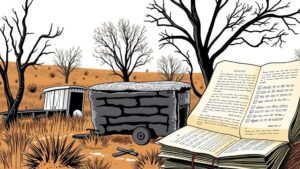Leveraging AI to Detect Artifact Trends in Regional Folk Tales and Oral Histories
Leveraging AI to Detect Artifact Trends in Regional Folk Tales and Oral Histories
The study of folk tales and oral histories plays a critical role in understanding cultural identities, historical experiences, and social norms. With the advent of artificial intelligence (AI), researchers now have the opportunity to uncover underlying patterns and trends within these narratives that were previously difficult to identify. This article explores how AI technologies, including natural language processing (NLP) and machine learning, can be utilized to analyze regional folk tales and oral histories, focusing on both methodologies and implications for cultural studies.
The Importance of Folk Tales and Oral Histories
Folk tales and oral histories serve as vital repositories of cultural knowledge, often encapsulating moral lessons, historical events, and collective beliefs. For example, the Brothers Grimm collected and published German folk tales in the early 19th century, which highlighted regional customs and societal norms of the time. Similarly, Native American narratives reflect a deep connection to land, spirituality, and community values.
According to the United Nations Educational, Scientific and Cultural Organization (UNESCO), approximately 6,000 languages are spoken around the world, many of which contain unique folk traditions and historical accounts that contribute to humanitys intangible cultural heritage. Recognizing and preserving these narratives is crucial, given that approximately 40% of the worlds languages are endangered, and with them, their associated folk tales, potentially leading to a loss of cultural diversity.
AI Technologies in Cultural Analysis
Artificial intelligence has emerged as an innovative tool for analyzing large datasets, making it particularly relevant for studying folk tales and oral histories. AIs ability to process and extract insights from unstructured data can unveil trends that are not readily apparent. Two essential AI technologies used in this context are:
- Natural Language Processing (NLP): NLP enables computers to understand and interpret human language. By using NLP, researchers can conduct sentiment analysis, identify themes, and classify narratives within folk tales and oral histories.
- Machine Learning: This subset of AI involves training algorithms to recognize patterns in data. By applying machine learning techniques, researchers can classify tales based on genre, detect motifs that recur across different cultures, and even correlate narrative elements with historical events.
Methodological Framework for AI Analysis
The integration of AI in analyzing folk tales and oral histories involves a structured methodological framework that includes data collection, preprocessing, analysis, and interpretation.
Data Collection: The initial step involves gathering a diverse set of tales and narratives from specific regions. For example, collecting stories from Southern Appalachian culture may include documented accounts from the late 19th to early 20th century, such as those compiled by local folklorists.
Data Preprocessing: Textual data often require cleaning and normalization to ensure consistency, including removing noise and irrelevant information. This step can include tokenization, stemming, and lemmatization.
Data Analysis: Utilizing AI tools, researchers can perform thematic analysis to identify common motifs, character archetypes, and narrative structures. For example, a machine learning model could classify stories into categories like heros journey or trickster tales based on learned patterns from training data.
Interpretation: Finally, the findings generated from AI analysis can be compared with existing literature to assess cultural significance and historical context, facilitating a deeper understanding of the folk narratives.
Case Studies and Real-World Applications
A notable example of leveraging AI to analyze folk narratives is the work conducted by the Digital Humanities Initiative at Stanford University, which utilizes machine learning algorithms to study the evolution of fairy tales across cultures. The project has quantitatively mapped story elements such as common character roles and moral lessons, revealing trends that span centuries and geographical boundaries.
Also, the use of AI in analyzing African oral histories, as exemplified by the African Storybook Project, has enabled researchers to digitize and categorize a multitude of folk tales, preserving them for future generations while also making them accessible to a broader audience. This accessibility offers educators and scholars new insights into cultural transmission and the evolution of storytelling.
Ethical Considerations and Challenges
While AI provides powerful methodologies for analyzing folk tales and oral histories, ethical considerations must be taken into account. Issues such as cultural appropriation and representation are paramount, necessitating a collaborative approach with local communities to ensure that their narratives are conveyed accurately and respectfully. Plus, there is a need for transparency in how AI models are trained and applied, as biases in data can lead to misinterpretations of cultural significance.
Conclusion
Leveraging AI to analyze artifact trends in regional folk tales and oral histories presents a transformative opportunity for cultural studies. By employing scientific methodologies and respecting cultural integrity, researchers can uncover valuable insights that contribute to our understanding of human experiences. To fully harness the potential of AI in this field, collaborative efforts between technologists, scholars, and local communities are essential.
Actionable Takeaways:
- Explore the use of AI tools in your own research to analyze folk narratives from the community.
- Consider ethical implications and engage with local storytellers to ensure cultural sensitivity.
- Keep abreast of advancements in AI technologies to continually enhance methodological approaches in folklore studies.


